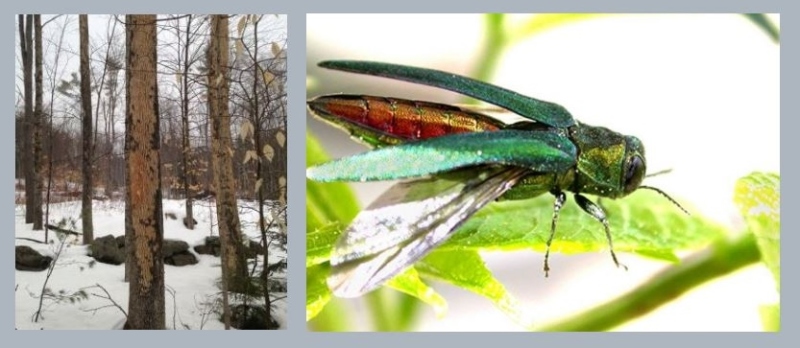New Hampshire's ash trees are part of the ecological, cultural and economic fabric of the state, but Granite State residents should realize their glory days as a pre-eminent forest hardwood are on the wane.
The culprit is the infamous emerald ash borer, or EAB, which attacks the ash, cuts off the transmission of fluids within the tree and kills it, usually within a couple of years.
According to a recent press release from the Maine Department of Agriculture, EAB was first discovered in North America in 2002. Since its arrival, it has killed hundreds of millions of ash trees.
But while there is little Maine and New Hampshire forest management teams can do to stop the blight of EAB, there are ways to mitigate its progression, said Andy Fast, a field specialist with the UNH Cooperative Extension.
 |
| Andy Fast (Courtesy photo) |
Fast will be at Rochester City Hall on Wednesday leading a forum on best practices regarding the EAB, whose destructiveness has resulted in a statewide quarantine in New Hampshire and a York County quarantine in Maine that was just announced earlier this month.
"The EAB is a very problematic invasive forest past," Fast said today. "It's a big concern for ash in the state and throughout the whole country."
Fast said that while the use of insecticides can save individual trees, their use on a large scale is not feasible.
"This (pest) will be eliminating ash as a dominant tree on our landscape," he said.
New Hampshire, like Maine, began its effort to combat EAB with a county by county quarantine, but within the last year its incursion into statewide forests was so great it was changed to a statewide quarantine.
Fast said the EAB beetle naturally moves a few miles each year, but the infestation has gotten exponentially worse as wood sellers transport ash for sales far from where it was harvested.
Because of this, part of his talk on Wednesday will be concerned with things timber dealers and homeowners can do to help stem the tide, or at least slow its spread.
One recommendation he will makes is that wood dealers not transport ash for sales beyond five miles of where it is harvested, cut and split, he said.
For homeowners who harvest ash for their own wood stoves, he will urge them to cut and split it after September and burn it that same winter.
And never move wood when the beetles are in flying mode.
"There's a serious question whether you can eradicate this, but we can try to find control to keep it in balance with our ecosystem, try to keep it growing to a lesser degree," Fast added.
He noted that by and large the timber sellers are trying to do the right thing, adding that there's not a lot of benefit for those big producers to not follow rules.
Meanwhile, Piera Siegert, State Entomologist for New Hampshire, noted that these are not regulations, just best management practices.
As of now, since New Hampshire is part of a federal ash quarantine, the only regulation to be strictly enforced is that no ash from New Hampshire can be shipped across state lines into Maine, with the exception of York County and the northeastern corner of Aroostook County.
Rochester's forum on the EAB will highlight methods for identifying infested trees, as well as best management practices. The event will be held on Wednesday at 6 p.m. at City Hall.
The workshop is being conducted in partnership with the University of New Hampshire Cooperative Extension, the New Hampshire division of Forests and Lands and the New Hampshire Department Agriculture, Markets and Food.
There is no cost to attend, and registration is not required. For more information about the event, contact Andy Fast at 603-841-6544 or andrew.fast@unh.edu.














